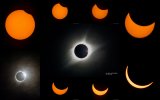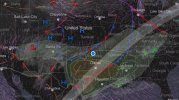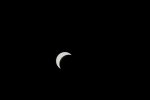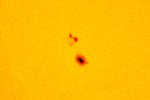Actually camera sensors will also get damaged by the intensity of the sunlight. I got a ND100000 ( 16.5 ) filter for my DSL camera just for that reason. Even if the sensor wasn't damaged, it would still be over exposed and you wouldn't be able to see anything except during the full eclipse itself ... which at that point, you don't use any filter. Before the full eclipse itself ... when it is first starting and the Moon is just starting to cover the Sun, you will need ( besides the filter ) a fast shutter speed and as more of the Sun gets covered, the longer the exposure will take. Then once it is full eclipse, you remove the filter and take more shots... the go in reverse once the full eclipse is finished. The full eclipse will last about 4 minutes 20 seconds give or take depending on where you are located.
As I was getting ready for the eclipse the last time I took pics in 2017 ... I practiced getting pics of the full Sun in the days before. This gave me the initial settings that I started with. Do a google search on eclipse photography, there are a lot of great informative posts about it that go into better detail than I can.
To find out if your camera is capable of decent pics of the full eclipse... try some test shots of the Milky Way using long shutter speeds. Make sure a bright star is in the shot to you can see if there is vibrations or not. A Milky Way shot will take a much longer shutter speed than an eclipse ... but it is still a good test to see if you can get a good stable shot or not.
Do get some solar glasses for you to look through... you'll be glad you did and if money is an issue... just get the paper type. That is what I used when I was taking my last eclipse pics. This year I bought a set of clip on's instead. Speaking of which, I'm unlikely to try and catch the eclipse this year unless it isn't cloudy like they are forecasting for my area and then I'll only get a 90+ % view.

 . I have to check what filter I have on it now
. I have to check what filter I have on it now  .
.



